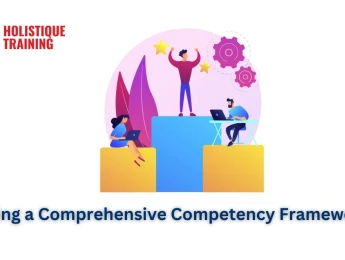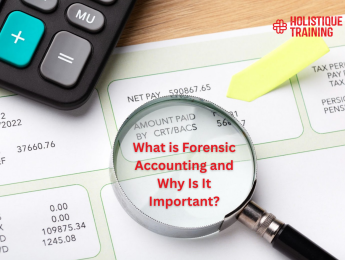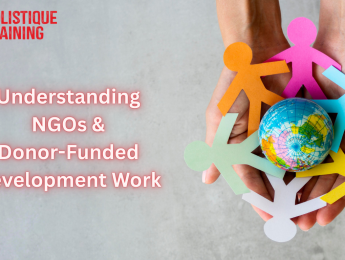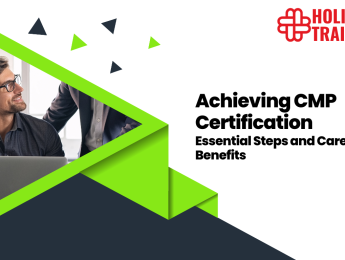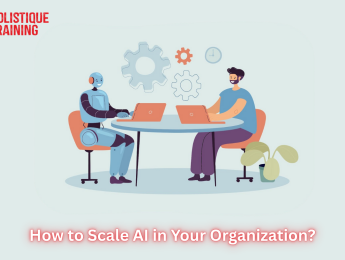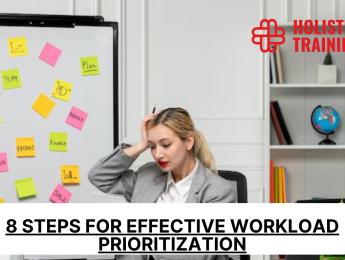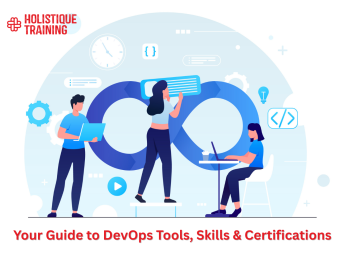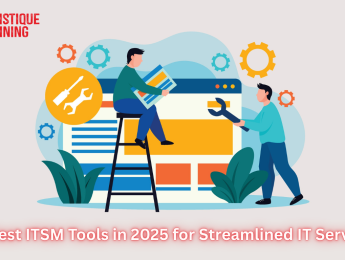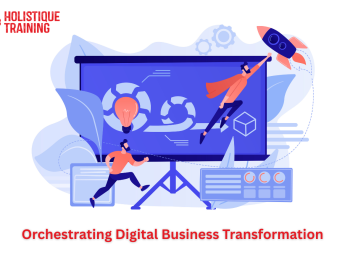- Table of Contents
- Introduction
- What is a Competency Framework?
- The Principles of a Competency Framework
- Alignment with Organisational Goals:
- Clarity and Specificity:
- Inclusivity and Stakeholder Involvement:
- Flexibility and Adaptability:
- Focus on Development and Growth:
- Integration with Other HR Processes:
- Measurability and Accountability:
- Consistency and Fairness:
- User-Friendly Design:
- Ongoing Feedback and Improvement:
- The Components of a Competency Framework
- Skills and Competencies:
- Core Values:
- Core Competencies:
- Functional Competencies:
- Leadership Competencies:
- Meta Competencies:
- Behavioural Indicators:
- Competency Levels:
- Alignment with Organisational Goals:
- Continuous Review and Adaptation:
- What Are the Benefits of a Competency Framework?
- Enhanced Recruitment and Selection:
- Targeted Training and Development:
- Improved Performance Management:
- Succession Planning:
- Increased Employee Engagement:
- Alignment with Organisational Strategy:
- Facilitation of Career Development:
- Improved Organisational Culture:
- Data-Driven Decision Making:
- Enhanced Adaptability and Resilience:
- How to Develop a Competency Framework in the Workplace
- Define the Purpose and Scope:
- Engage Stakeholders:
- Research Industry Standards and Best Practices:
- Identify Key Competencies:
- Develop Competency Descriptions:
- Create a Competency Model:
- Pilot the Framework:
- Train Stakeholders on Implementation:
- Integrate the Framework into HR Processes:
- Review and Revise Regularly:
- Deciding if Your Company Needs a Competency Framework
- Assessing Current Challenges:
- Understanding Organisational Goals:
- Evaluating Employee Performance:
- Identifying Skills Gaps:
- Facilitating Employee Development:
- Promoting a Strong Organisational Culture:
- Supporting Succession Planning:
- Enhancing Recruitment Efforts:
- Gaining Competitive Advantage:
- Long-Term Vision:
- Conclusion
Introduction
Organisations operate in a rapidly changing landscape where success hinges on the capabilities and performance of their workforce. As businesses strive to meet complex challenges, the demand for clear structures that guide employee development and align skills with organisational goals becomes paramount. A competency framework is crucial in this endeavour, providing a comprehensive outline of the skills, behaviours, and attributes required for employees to thrive in their roles. This blog post will delve into the concept of a competency framework, exploring its definition, principles, components, benefits, and a strategic approach to its development. Additionally, it will help organisations assess the necessity of implementing a competency framework within their structures.
What is a Competency Framework?
A competency framework is a structured system that outlines the specific skills, knowledge, behaviours, and attitudes necessary for employees to perform effectively. It is a guideline for the competencies required at various organisational levels, from entry-level positions to senior leadership roles. By defining these competencies, organisations can create a common language around performance expectations and align their human resource practices with their strategic objectives.
Competency frameworks are essential for various organisational functions, including recruitment, training and development, performance management, and succession planning. They provide clarity and consistency in defining what success looks like within the organisation, ensuring that all employees are aware of the expectations tied to their roles. Organisations can foster a culture of continuous improvement and professional development by having a clear framework.
The Principles of a Competency Framework
A competency framework is more than just a set of skills and behaviours; it embodies foundational principles that guide its development and implementation. These principles ensure the framework is effective, relevant, and aligned with the organisation's goals. Here’s a detailed exploration of the key principles that underpin a successful competency framework:
Alignment with Organisational Goals
The competency framework must align closely with the organisation's mission, vision, and strategic objectives. This principle ensures that the competencies defined within the framework directly support the organisation's broader goals. By establishing a clear connection between individual competencies and organisational success, the framework promotes a unified direction for all employees, fostering a sense of purpose and engagement.
Clarity and Specificity
A well-designed competency framework should provide clear and specific definitions of each competency. This clarity is essential for employees to understand what is expected of them and how their performance will be evaluated. Ambiguity in competency definitions can lead to clarity, consistent application, and effective assessments. Organisations can facilitate better understanding and implementation by articulating competencies in specific terms and providing concrete examples.
Inclusivity and Stakeholder Involvement
Developing a competency framework should be an inclusive process that involves input from various stakeholders, including employees at different levels, management, and human resources. This collaborative approach ensures that the framework reflects the diverse perspectives and experiences within the organisation. By engaging stakeholders, organisations can enhance buy-in, foster a sense of ownership, and ensure that the framework meets the actual needs of the workforce.
Flexibility and Adaptability
A competency framework should be flexible and adaptable to changing business environments and organisational needs. As industries evolve, new skills and competencies may become relevant, while existing ones may need to be updated or removed. The principle of adaptability encourages organisations to regularly review and revise their competency frameworks to stay relevant and effective. This ongoing process helps organisations respond proactively to market demands, technology, and shifts in workforce expectations.
Focus on Development and Growth
A competency framework should prioritise employee development and growth by providing a clear path for skill enhancement and career advancement. It should encourage continuous learning and improvement, enabling employees to identify their strengths and areas for development. By fostering a culture of growth, organisations can boost employee engagement, retention, and overall performance. This principle emphasises that the framework is not merely a tool for assessment but also a roadmap for personal and professional development.
Integration with Other HR Processes
A competency framework should be integrated with various human resource processes, including recruitment, performance management, training, and succession planning. This integration ensures that competencies are consistently applied across the employee lifecycle, from hiring to development and promotion. For example, using the competency framework in recruitment helps identify candidates whose skills align with organisational needs. In contrast, its use in performance evaluations provides a fair basis for assessing employee contributions.
Measurability and Accountability
Establishing clear metrics for evaluating competencies is crucial for the framework's effectiveness. Organisations should define how competencies will be measured and assessed, ensuring that these evaluations are objective, fair, and transparent. This principle fosters accountability, as employees can see how their performance is tied to specific competencies. By incorporating measurable outcomes, organisations can track progress, identify skill gaps, and make informed decisions about employee development.
Consistency and Fairness
The competency framework should be applied consistently across the organisation to ensure fairness in evaluations and development opportunities. All employees should be assessed using the same standards, regardless of their role or level. This consistency promotes trust among employees and enhances the credibility of the framework. Organisations can create a more inclusive and supportive workplace culture by treating all employees equitably.
User-Friendly Design
A competency framework should be designed with the end-users in mind—employees, managers, and HR professionals. It should be easy to understand, accessible, and practical for everyday use. A user-friendly design encourages engagement with the framework and facilitates its integration into daily operations. Providing training and resources on using the framework effectively can further enhance its usability and impact.
Ongoing Feedback and Improvement
Finally, a competency framework should include mechanisms for ongoing feedback and improvement. Gathering input from employees and managers about the framework’s effectiveness allows organisations to make necessary adjustments and refinements. Regularly soliciting feedback ensures that the framework remains relevant and effective in meeting organisational and employee needs. This principle promotes a culture of continuous improvement, reinforcing the idea that the competency framework is a living document that evolves alongside the organisation.
By adhering to these principles, organisations can create a robust and effective competency framework that enhances individual and organisational performance and fosters a culture of learning, development, and alignment with strategic goals. The principles provide a solid foundation for the framework, ensuring it remains relevant, practical, and beneficial to employees and the organisation.
The Components of a Competency Framework
A well-structured competency framework is a foundation for effective organisational talent management. Defining the skills, behaviours, and values required for success provides a roadmap for recruitment, performance evaluation, and employee development. The components of a competency framework can be categorised into several key elements, each contributing to its overall effectiveness. Here’s an in-depth look at the essential components of a competency framework:
Skills and Competencies
At the core of any competency framework are the specific skills and competencies employees need to effectively perform their roles. These may include technical skills, such as proficiency in software or tools, and soft skills, such as communication and problem-solving abilities. Technical skills refer to the practical knowledge required to execute job-specific tasks. In contrast, soft skills encompass interpersonal and emotional intelligence aspects that facilitate collaboration and effective interaction in the workplace. Clearly defining these skills and competencies helps employees understand what is expected of them and provides a basis for assessment and development.
Core Values
Core values are fundamental beliefs and principles that guide an organisation’s culture and behaviour. Integrating core values into the competency framework reinforces the desired workplace culture and ensures that employees align their actions with the organisation’s mission and vision. For instance, if an organisation values innovation, teamwork, or customer-centricity, these values should be reflected in the competencies defined within the framework. By embedding core values into the framework, organisations can cultivate a shared understanding of working within their culture, fostering a sense of belonging and employee engagement.
Core Competencies
Core competencies are the essential skills and behaviours that all employees within an organisation should possess, regardless of their specific roles or functions. These competencies align with the organisation’s mission and vision and reflect the behaviours necessary to achieve strategic goals. Examples of core competencies might include adaptability, effective communication, and teamwork. By establishing a set of core competencies, organisations can ensure that all employees are working toward a common purpose and demonstrate behaviours that contribute to overall organisational success.
Component | Description | Purpose |
Skills and Competencies | Specific abilities required for job performance | Enhance individual performance and effectiveness |
Core Values | Fundamental beliefs guiding organisational behavior | Shape company culture and employee behaviour |
Core Competencies | Essential capabilities for organisational success | Ensure alignment with strategic objectives |
Functional Competencies | Role-specific skills for particular job functions | Drive efficiency within specific job areas |
Leadership Competencies | Skills necessary for effective leadership roles | Foster strong leadership and team dynamics |
Table 1: Comparison of the different competency components
Functional Competencies
Functional competencies are specific to particular job functions or roles within the organisation. They detail the knowledge, skills, and abilities required to perform effectively in a given function, such as marketing, finance, or engineering. For instance, a marketing role may require competencies in digital marketing strategies, data analysis, and project management. By outlining functional competencies, organisations can create tailored training and development programs that equip employees with the specific skills needed to excel in their roles. This focus on functional competencies enhances the organisation’s capacity to meet its strategic objectives by ensuring that employees possess the relevant expertise.
Leadership Competencies
Leadership competencies are the skills and behaviours required for effective leadership at various organisational levels. These competencies often include strategic thinking, decision-making, emotional intelligence, and the ability to inspire and motivate teams. As organisations seek to develop their leadership pipeline, defining leadership competencies becomes critical in identifying and nurturing potential leaders. By articulating these competencies, organisations can create targeted leadership development programs that prepare individuals for future leadership roles and ensure they are equipped to navigate the complexities of managing teams and driving organisational success.
Meta Competencies
Meta competencies refer to the higher-order skills that encompass and connect various competencies. These competencies are often more abstract and can include critical thinking, adaptability, and lifelong learning. Meta competencies enable employees to apply their skills across different contexts and roles, fostering flexibility and resilience in a rapidly changing work environment. By emphasising meta-competencies in the framework, organisations can promote a culture of continuous learning and development, encouraging employees to adapt to new challenges and thrive in their careers.
Behavioural Indicators
Defining behavioural indicators for each competency is essential to complement the components listed above. Behavioural indicators provide specific examples of how competency is demonstrated in the workplace. For instance, if a competency is "effective communication," the behavioural indicators might include actively listening during meetings, providing constructive feedback, or adapting communication styles to suit different audiences. By outlining these indicators, organisations clarify expectations and create a common language for evaluating employee performance. This helps employees and managers assess competency levels more objectively, fostering fair and consistent performance evaluations.
Competency Levels
Competency frameworks often incorporate different levels of proficiency for each competency. These levels describe the depth of knowledge and skill required for various positions within the organisation, ranging from beginner to advanced. For example, a competency may have levels such as "Basic," "Intermediate," and "Advanced," with specific descriptions outlining what is expected at each level. This tiered approach allows organisations to assess and develop employees according to their proficiency and career aspirations. It also aids in succession planning by identifying potential candidates for advancement based on their demonstrated competencies.
Alignment with Organisational Goals
A competency framework should align with the organisation's overall strategic goals. Each component must reflect the skills and behaviours necessary to achieve business objectives. For instance, if an organisation prioritises customer satisfaction, the framework should emphasise customer service, empathy, and problem-solving competencies. By ensuring the framework supports organisational goals, companies can create a more focused approach to talent management, aligning individual performance with broader business outcomes.
Continuous Review and Adaptation
Finally, a competency framework is not static; it requires ongoing review and adaptation. As organisational priorities, industry trends, and workforce needs evolve, the framework should be updated to reflect these changes. This may involve revisiting competencies, adding new ones, or adjusting existing ones to ensure they remain relevant and effective. Establishing a process for regular review and feedback will help keep the competency framework aligned with the dynamic nature of the business environment.
By incorporating these components into a competency framework, organisations can create a comprehensive and effective system that enhances talent management practices. This framework is a valuable tool for recruitment, performance evaluation, employee development, and succession planning, ultimately contributing to a high-performing and engaged workforce aligned with organisational goals.
What Are the Benefits of a Competency Framework?
Implementing a competency framework offers organisations numerous advantages, significantly impacting human resource management and overall performance. Here are some of the key benefits:
Enhanced Recruitment and Selection
A clearly defined competency framework aids in identifying the right candidates for specific roles, ensuring a better fit between employees and job requirements. By outlining the competencies required for success in each position, hiring managers can evaluate candidates’ skills, experiences, and potential more effectively. This targeted approach reduces the likelihood of hiring mismatches and enhances the organisation’s reputation as an employer of choice, attracting top talent aligned with the company’s values and goals.
Targeted Training and Development
By identifying gaps in competencies, organisations can design targeted training and development programs that address employees' specific needs. This tailored approach to professional development helps maximise training investments by focusing on the skills that will most benefit the organisation and its employees. Employees are more likely to engage with and benefit from training initiatives when they see a clear connection between the competencies being developed and their current or future job roles.
Improved Performance Management
A competency framework provides a clear basis for evaluating employee performance, facilitating more objective performance reviews and feedback discussions. Managers can assess employees against predefined competencies, leading to fairer and more consistent evaluations. This clarity helps employees understand how their performance is measured and what they need to improve. Moreover, it fosters constructive feedback conversations, enabling a culture of continuous improvement where employees feel supported in their professional growth.
Succession Planning
Organisations can proactively develop talent and create succession plans by identifying the competencies required for key positions, ensuring a pipeline of qualified candidates for future leadership roles. This foresight is crucial in today’s fast-paced business environment, where leadership transitions can significantly impact organisational stability and performance. A well-structured competency framework allows organisations to identify high-potential employees early on and provide them with the development opportunities they need to prepare for future challenges.
Increased Employee Engagement
Clarity around performance expectations fosters a sense of ownership and accountability among employees, leading to increased engagement and motivation. When employees understand the skills and behaviours valued within the organisation, they can take charge of their development and align their efforts with organisational goals. Engaged employees are more likely to be productive, committed to their work, and enthusiastic about contributing to the organisation’s success.
Alignment with Organisational Strategy
A competency framework ensures that employee skills and behaviours align with the organisation’s strategic objectives, driving overall success and performance. Organisations can ensure that their workforce is equipped to meet current and future challenges by defining the competencies necessary for achieving strategic goals. This alignment helps streamline efforts across various functions as employees work together toward common objectives, ultimately enhancing organisational cohesion and effectiveness.
Facilitation of Career Development
Employees gain insight into the competencies they need to develop to advance in their careers, fostering a culture of continuous learning and professional growth. A competency framework acts as a roadmap for employees, helping them understand the skills required for different organisational roles. This transparency empowers employees to take ownership of their career paths, seek development opportunities, and engage in meaningful conversations about their career aspirations with their managers.
Improved Organisational Culture
Implementing a competency framework contributes to a positive organisational culture by promoting shared values and behaviours. As employees align their performance with the competencies defined in the framework, the organisation cultivates a sense of unity and purpose. This shared understanding of expectations fosters collaboration, enhances team dynamics, and creates an environment where employees feel valued and motivated to contribute to the organisation’s success.
Data-Driven Decision Making
A competency framework provides organisations valuable data and insights that inform decision-making processes. By tracking competencies across the workforce, organisations can identify trends, skill gaps, and areas for improvement. This data-driven approach enables organisations to make informed decisions regarding training investments, talent management strategies, and workforce planning, ultimately enhancing overall organisational effectiveness.
Enhanced Adaptability and Resilience
A competency framework enables organisations to remain agile and resilient in an ever-changing business landscape. By regularly reviewing and updating competencies to reflect market demands and technological advancements, organisations can ensure their workforce is prepared to navigate challenges and seize new opportunities. This adaptability enhances organisational performance and positions the company for long-term success in a competitive environment.
In summary, the benefits of a competency framework extend far beyond simple skill assessment; they create a comprehensive approach to talent management that drives engagement, performance, and alignment with organisational goals. By fostering a culture of continuous improvement and professional development, organisations can unlock the full potential of their workforce and establish a solid foundation for sustainable success.
How to Develop a Competency Framework in the Workplace
Creating a competency framework is a strategic process that requires careful planning, stakeholder engagement, and continuous evaluation. Here’s a detailed, step-by-step guide to developing a competency framework that aligns with your organisation’s goals and enhances workforce effectiveness:
Define the Purpose and Scope
Start by identifying the primary objectives of the competency framework. Consider questions like: What challenges are you aiming to address? Are you focusing on recruitment, training, performance management, or all of the above? Clarifying the purpose will guide the framework’s design and implementation. Involving key stakeholders at this stage—such as leadership, HR, and department heads—will help ensure that the framework aligns with the overall business strategy and meets the needs of various teams.
Engage Stakeholders
Once the purpose is defined, input from diverse organisational stakeholders will be gathered. This may include managers, team leaders, and employees from different departments and levels. Conduct interviews, surveys, and focus groups to collect insights about the skills, behaviours, and values essential for success in various roles. Engaging stakeholders early fosters buy-in and ensures the framework reflects the organisation’s culture and needs.
Research Industry Standards and Best Practices
Examine existing competency frameworks within your industry to identify best practices and benchmarks. This research can provide valuable insights into the competencies commonly sought after in similar roles and help ensure your framework is relevant and competitive. Look at frameworks used by successful organisations and professional bodies to gather ideas and inspiration for your own development process.
Identify Key Competencies
Based on stakeholder input and industry research, compile a list of key competencies relevant to your organisation’s roles. Categorise these competencies into broad groups, such as core competencies (applicable to all employees), functional competencies (specific to certain functions), and leadership competencies (for managerial roles). Be thorough in this process, ensuring you capture a comprehensive set of competencies that align with organisational values and strategic objectives.
Develop Competency Descriptions
Create clear and concise descriptions for each identified competency that outline the expected behaviours and associated skills. Use specific language that is easy to understand and actionable. Include examples of how each competency manifests in the workplace to provide clarity and context for employees. These descriptions will be the foundation for evaluating employee performance and guiding development efforts.
Create a Competency Model
Organise the competencies into a structured model that outlines their relationships. This model can take various forms, such as a hierarchy or matrix, depending on the complexity of your organisation and the number of competencies identified. Ensure the model is visually appealing and easily accessible to employees and managers, as it will serve as a reference point for training, performance evaluations, and career development discussions.
Pilot the Framework
Before full-scale implementation, consider piloting the competency framework within a specific department or group. This allows you to test the framework in real time, gather feedback, and identify any necessary adjustments. Monitor how the pilot impacts recruitment, training, and performance management processes, and use this data to refine the framework before rolling it out organisation-wide.
Train Stakeholders on Implementation
Provide training sessions for managers and HR personnel on effectively using the competency framework. Equip them with the knowledge and tools to integrate the framework into recruitment, performance evaluations, and employee development plans. This training should also cover how to communicate the framework to employees and encourage their active participation in utilising it for their growth.
Integrate the Framework into HR Processes
Once the competency framework is finalised, embed it into your organisation’s HR processes. Update job descriptions, performance evaluation criteria, and training programs to align with the competencies outlined in the framework. Ensure that the framework is a central part of your talent management strategy, promoting its use in various HR functions, such as succession planning, career development, and workforce planning.
Review and Revise Regularly
Developing a competency framework is not a one-time effort; it requires ongoing review and refinement. Establish a regular review cycle (e.g., annually) to assess the framework’s effectiveness, relevance, and alignment with changing business needs. Gather feedback from users and stakeholders, and be open to making necessary adjustments based on evolving industry trends, organisational changes, or employee input.
By following these ten steps, organisations can create a competency framework that enhances individual and team performance and supports strategic alignment and organisational growth. This comprehensive approach ensures that the framework remains relevant, effective, and aligned with the organisation's mission and values, ultimately contributing to a culture of continuous improvement and development.
Metric | Description |
Employee Performance Ratings | Assesses individual contributions to goals |
Training Completion Rates | Tracks participation in development programs |
Retention Rates | Measures employee turnover and retention success |
Promotion Rates | Evaluates the frequency of internal promotions |
Employee Engagement Scores | Gauges overall employee satisfaction levels |
Table 2: Metrics needed to measure the effectiveness of a competency framework
Deciding if Your Company Needs a Competency Framework
Determining whether your organisation requires a competency framework is a critical decision that involves assessing current practices, identifying challenges, and evaluating potential benefits. A well-structured competency framework can significantly enhance various aspects of human resource management. Still, it’s essential to consider whether such a system aligns with your organisation’s specific needs and goals. Here are several factors to consider when deciding if a competency framework is necessary for your company:
Assessing Current Challenges
Begin by analysing your existing talent management processes. Identify any challenges or inefficiencies within recruitment, performance management, employee development, or succession planning. Common issues may include high turnover rates, unclear job expectations, lack of employee engagement, or difficulties identifying high-potential candidates. If these challenges hinder your organisation’s performance, a competency framework could provide clarity and structure to address these issues effectively.
Understanding Organisational Goals
Consider your organisation’s strategic objectives and future aspirations. If you are pursuing growth, innovation, or significant changes in your business model, a competency framework can help align employee skills and behaviours with these goals. Ensuring that employees possess the necessary competencies to meet organisational objectives can foster a more agile and adaptive workforce capable of navigating change and driving success.
Evaluating Employee Performance
Take stock of your current performance evaluation methods. If performance reviews lack consistency, objectivity, or clarity, employees may be unsure of how to meet expectations or improve their performance. A competency framework offers a structured approach to performance management by providing clear criteria against which employees can be assessed. If performance evaluations result in subjective feedback or employee dissatisfaction, it may be time to consider implementing a competency framework.
Identifying Skills Gaps
Conduct a skills gap analysis to determine if your organisation has the competencies to achieve its goals. Assess whether current employees possess the required skills and knowledge to perform effectively. Find significant gaps that hinder productivity, customer satisfaction, or innovation. A competency framework can help pinpoint the specific skills and competencies needed for success, guiding targeted training and development initiatives.
Facilitating Employee Development
Evaluate your current approach to employee development and training. If your organisation lacks a clear career path or employees feel lost about how to grow within the company, a competency framework can provide a roadmap for their development. By outlining the competencies needed for various roles, employees can better understand how to develop the necessary skills and prepare for future opportunities. Enhancing development opportunities through a competency framework may be beneficial if employee retention and engagement are concerns.
Promoting a Strong Organisational Culture
Consider whether your organisation has a clearly defined set of values and behaviours that guide employee actions. A competency framework can reinforce and promote these core values by integrating them into everyday practices and expectations. If your organisation struggles to maintain a cohesive culture or employees are unclear about expected behaviours, a competency framework can provide the structure needed to instil shared values across the workforce.
Supporting Succession Planning
Examine your succession planning practices. Suppose you struggle to identify and develop future leaders or lack clarity around what competencies are necessary for leadership roles. In that case, a competency framework can facilitate the identification of high-potential employees. Organisations can proactively prepare future leaders by defining the competencies required for various leadership positions and ensuring a smooth transition during leadership changes.
Enhancing Recruitment Efforts
If your organisation faces challenges in attracting and retaining top talent, it may indicate a need for a more structured approach to recruitment. A competency framework can provide clear criteria for evaluating candidates, ensuring hiring decisions align with organisational needs. If new hires' quality is inconsistent or struggle to adapt to your organisation’s culture, implementing a competency framework could significantly improve your recruitment processes.
Gaining Competitive Advantage
Organisations must continuously adapt and innovate to stay competitive in today's rapidly changing business landscape. A competency framework can enhance agility and responsiveness by ensuring employees possess the skills to meet market demands and organisational goals. If your organisation wants to differentiate itself in the market or enhance its reputation as an employer of choice, a well-defined competency framework can contribute to a more skilled, motivated, and engaged workforce.
Long-Term Vision
Finally, reflect on your organisation’s long-term vision and the role that a competency framework could play in achieving that vision. A competency framework aligns well with these objectives if you aim to build a strong talent pipeline, foster a culture of continuous learning, and create a high-performing workforce. It establishes a clear framework for development and performance management that can evolve with the organisation, supporting sustained growth and success.
In summary, deciding whether your company needs a competency framework requires careful consideration of existing challenges, strategic goals, and employee development practices. By evaluating these factors, organisations can determine if implementing a competency framework will improve performance, engagement, and alignment with business objectives. A competency framework can be valuable for driving organisational success if the analysis indicates a need for a structured approach to managing talent and performance.
Conclusion
A well-defined competency framework is powerful for organisations seeking to optimise their human resources and enhance overall performance. By establishing clear expectations around skills and competencies, organisations can create a culture of accountability, professional development, and alignment with strategic objectives. Developing a competency framework may require time and resources, but its benefits in terms of employee engagement, recruitment, training, and succession planning are invaluable. As organisations navigate an ever-evolving business landscape, implementing a competency framework may be the key to unlocking their full potential.
To further support your organisation in this journey, consider enrolling in our course "Competency & Value Development & Implementation." This comprehensive program provides the tools and knowledge needed to develop and implement an effective competency framework tailored to your organisation’s needs. Join us to empower your workforce and drive meaningful change that aligns with your strategic goals.


